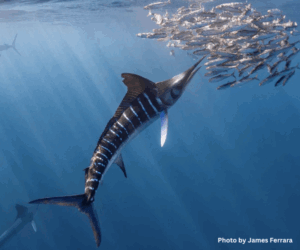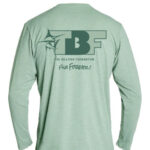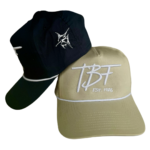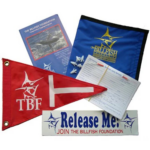 Since the launch of the Marlin Fly Project in December 2022, TBF has expanded its research capacity, including new regions, organizations, individuals, and communities. Powered by people and grounded in science, TBF’s Groundswell Projects have united local anglers, captains, and researchers around the world to track marlin, advance satellite science, and build a wave of community-driven conservation projects.
Since the launch of the Marlin Fly Project in December 2022, TBF has expanded its research capacity, including new regions, organizations, individuals, and communities. Powered by people and grounded in science, TBF’s Groundswell Projects have united local anglers, captains, and researchers around the world to track marlin, advance satellite science, and build a wave of community-driven conservation projects.
As TBF continues to deploy tags in areas such as Magdalena Bay, Mexico, Nantucket, MA, The Bahamas, and the Gulf, it’s more important than ever to know what to do if you encounter a tag.
1. Identify the Type of Tag
- Traditional (Conventional, Spaghetti, etc.): Usually thin with colored plastic (TBF tags are orange). These tags will contain specific information that allows a user to identify each individual tag. For more information on tag anatomy, visit TBF’s Tag & Release Guide.
- Satellite Tag (PSAT, Archival, etc.): Typically a larger, more complex instrument with a large housing, antenna, and sometimes a tether. Compared to traditional tags, which are relatively inexpensive, these tags cost thousands of dollars and have the ability to record data in real time.
2. Identify Tag Organization
- All of TBF’s traditional tags start with the letters “BF”, followed by six numerals. For example, BF123456. Additionally, our traditional tags display “The Billfish Foundation” along with a contact phone number and email address.
- For tags associated with other organizations, use information on the tags to determine who to contact.
3. Handle With Care
- For traditional tags, if a fish is recaptured with a tag, DO NOT pull the tag out (this could harm the fish). Instead, carefully cut the monofilament leader near the tag, leaving the tag head in the fish.
- Keep the tag (and any attached tag card if present) in a safe, dry container.
- For satellite tags found on a fish, DO NOT remove them.
- If the tag has detached or washed ashore, document as much as possible, including photos, GPS location, and condition.
- Keep the tag (and any attached tag card if present) in a safe, dry container.
4. Report It Promptly
- Keep note of the tag ID number, color, and any manufacturer or model markings, as well as the location (GPS coordinates if possible) and date you found it.
- For TBF, you can simply log into our tag portal (tagbillfish.org) and click “Submit a Recapture”. From there you’ll follow the prompts to submit the data and receive your reward.
- In general, you’ll need the following information to report a tag:
-
- Tag ID Number
-
- Type (traditional or satellite)
-
- Date and Time of Recapture
-
- GPS or Location Description
-
- Photos of Tag
-
- Any Relevant Notes (e.g. marine growth, condition)
- For any questions related to the tag or the process, please email [email protected]
- If you have a tag card (for traditional tags), you can also mail it directly to TBF by dropping it at your nearest USPS mailbox or visiting a local USPS. For international shipments, additional steps may be required.
-
- For satellite tags, please contact the phone number and/or email address written on the tag as soon as possible to arrange for shipping.
5. What Happens Next & Rewards
- As a token of appreciation, TBF sends t-shirts to all individuals involved in the recapture (maximum of five). Sizes and shipping addresses are confirmed online when submitting your recapture through TBF”s portal.
- In some regions and/or specific programs, there may be cash lotteries or prize incentives tied to recaptures, satellite tags, etc.
6. Why This Is So Important
- Completes the Scientific Loop: Traditional tags deliver the most value when recaptured and reported.
- Provides Vital Data: Recapture information helps researchers understand growth rates, movements, stocks, habitat use, post-release survival, etc.
- Informs Conservation & Management: Better data leads to better policies, sustainable recreational fisheries, and healthier billfish populations.
- Supports TBF’s Mission: Your participation strengthens the largest, open-sourced billfish tagging database in the world, helping to strengthen the sportfishing community.






